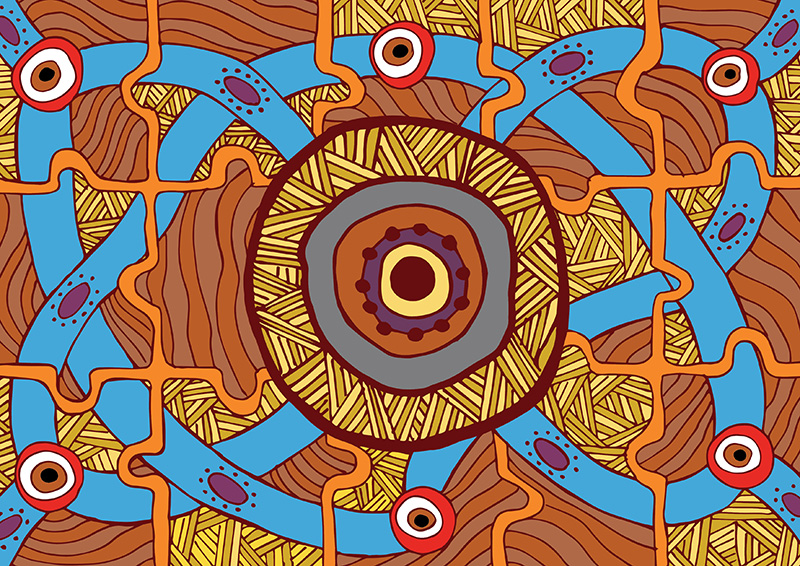03.02.2017

A Pathway for Justice
Artist statement:
‘It’s really important that communities sit down and start talking together’- Mick Gooda
“A Pathway for Justice represents the complex problem of the over-representation of Aboriginal and Torres Strait Islander people in the criminal justice system. As said by Mick Gooda, communities and all stakeholders must come together and sit down to talk openly around ways forward.
Just as a jigsaw puzzle is made up of many pieces, so is the overrepresentation of Indigenous people in the criminal justice system. To understand the full picture, it is important to look at each piece of the puzzle and to bring them together for the puzzle to be solved. Without stakeholders acknowledging their piece in the puzzle, the bigger picture will remain broken, disconnected and unjust. It is important that the foundations of this journey are preventative through education and cultural understanding. The Australian Law Reform Commission (represented by the orange pathways) has the capacity to become the turnkey for change through law reform.
The central motif is a visual representation of a prison. The yellow cross-hatching pattern used within the central symbol and sporadically throughout the artwork is to represent the hardships faced and a disconnection from culture.
The three tier circle symbol with multiple smaller circles bordering it is a representation of the ‘person’ whether male, female, youth or staff within the prison and their internal thoughts, feelings and emotions. The stakeholders are represented by the three tier red, brown and white circles.
The journey is not simple, and not without hardships. This process is represented by the blue silhouette weaving throughout the artwork. Along this journey, it is vital to engage in frequent culturally appropriate conversations. These conversations are represented by the purple oval shaped meeting place symbols.”
Created by Gilimbaa artist/designer, Rachael Sarra, Goreng Goreng
